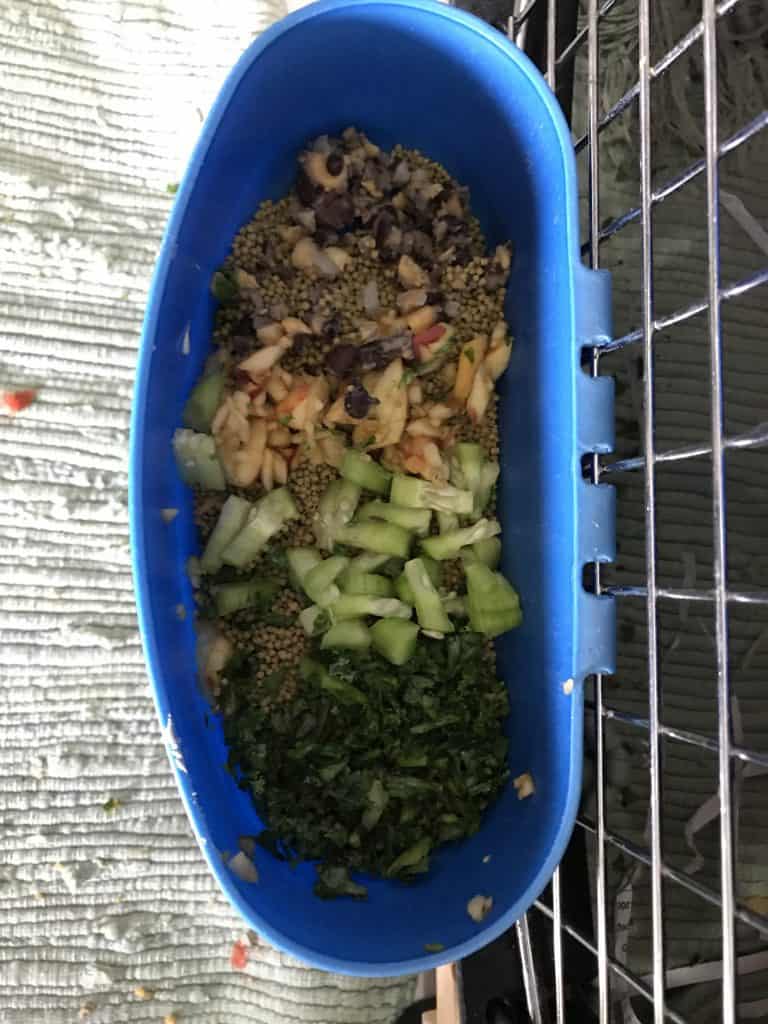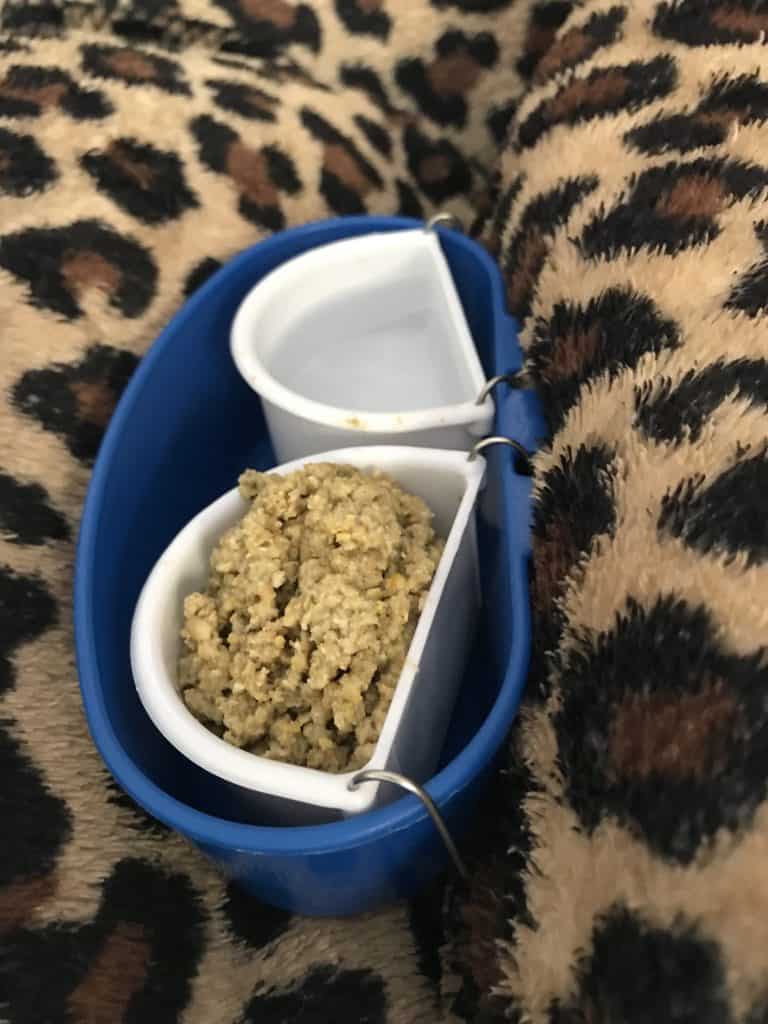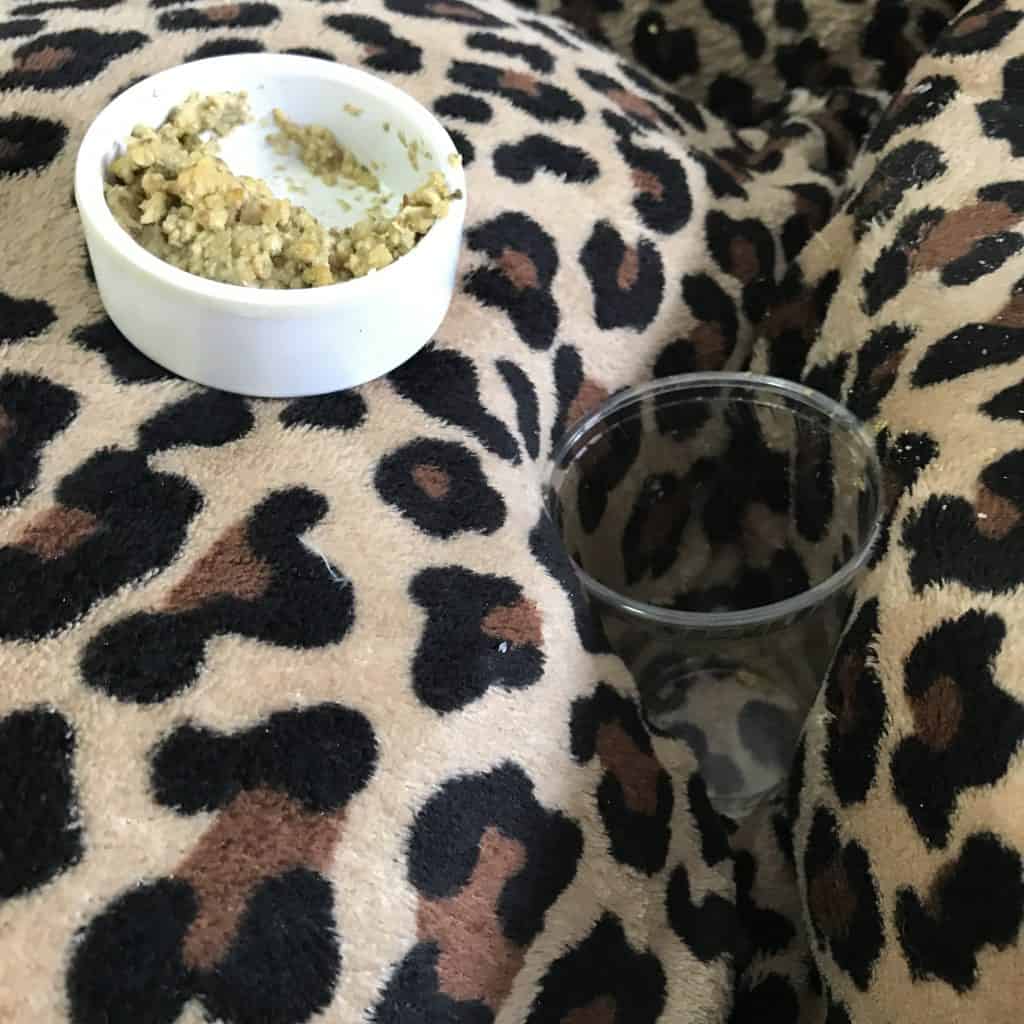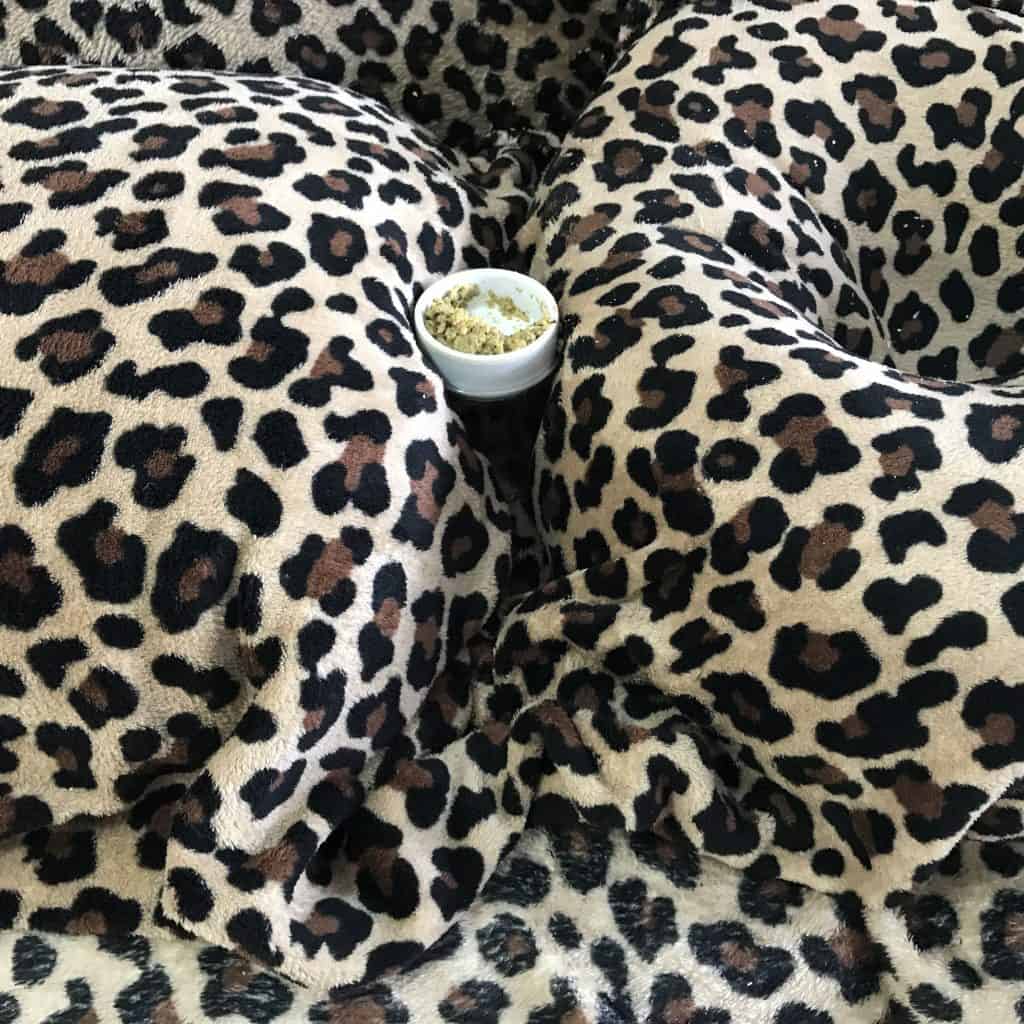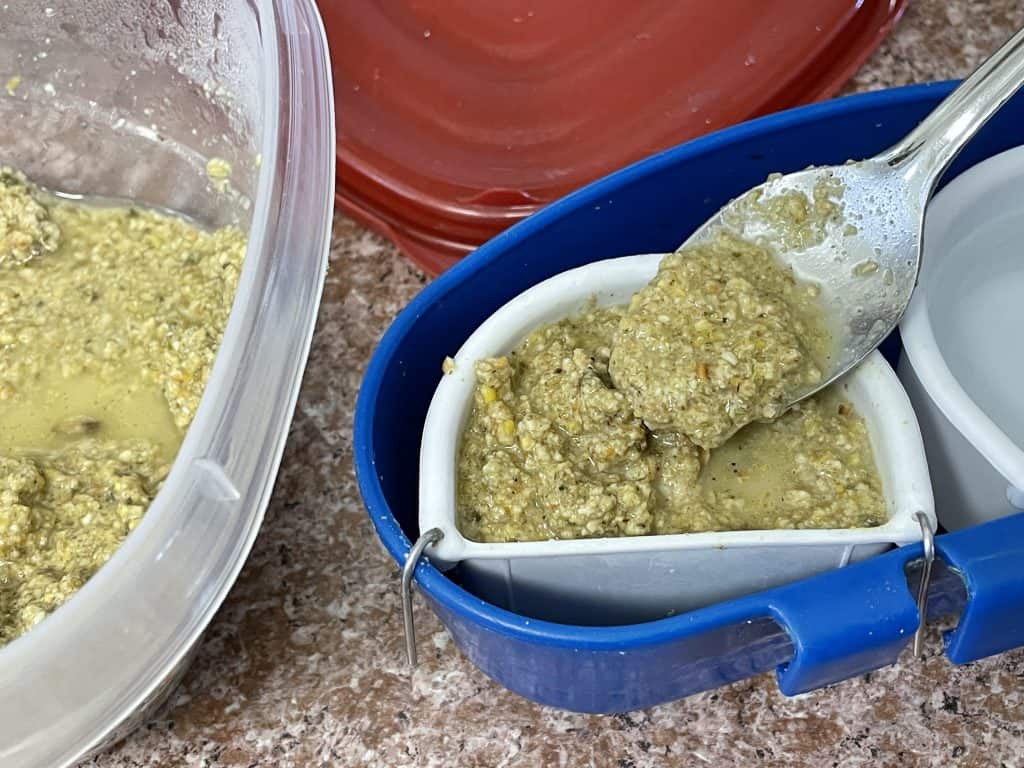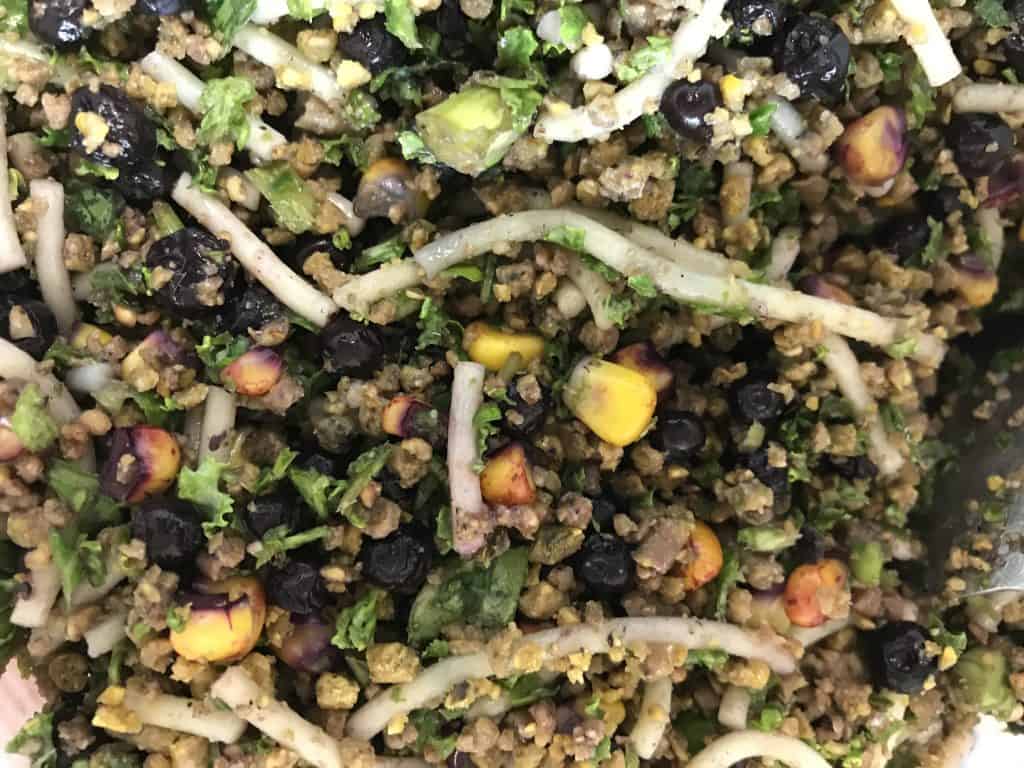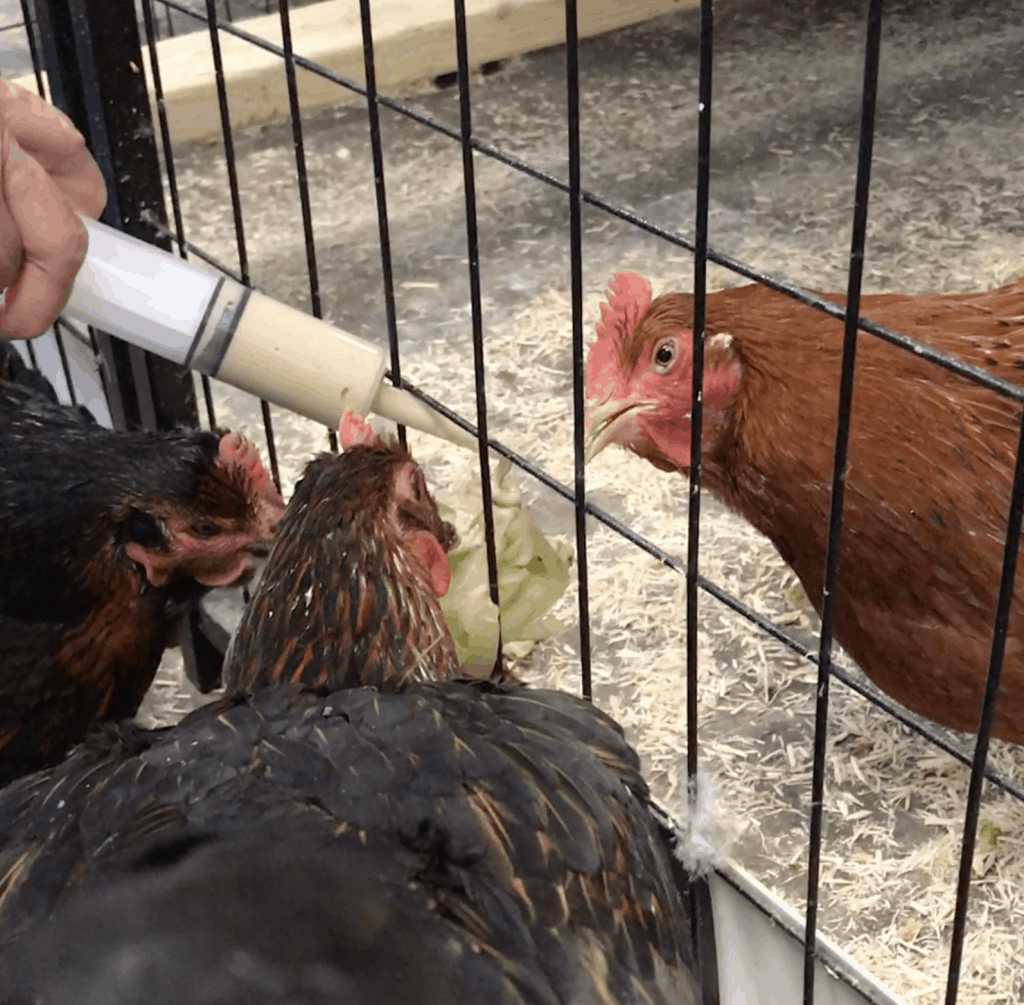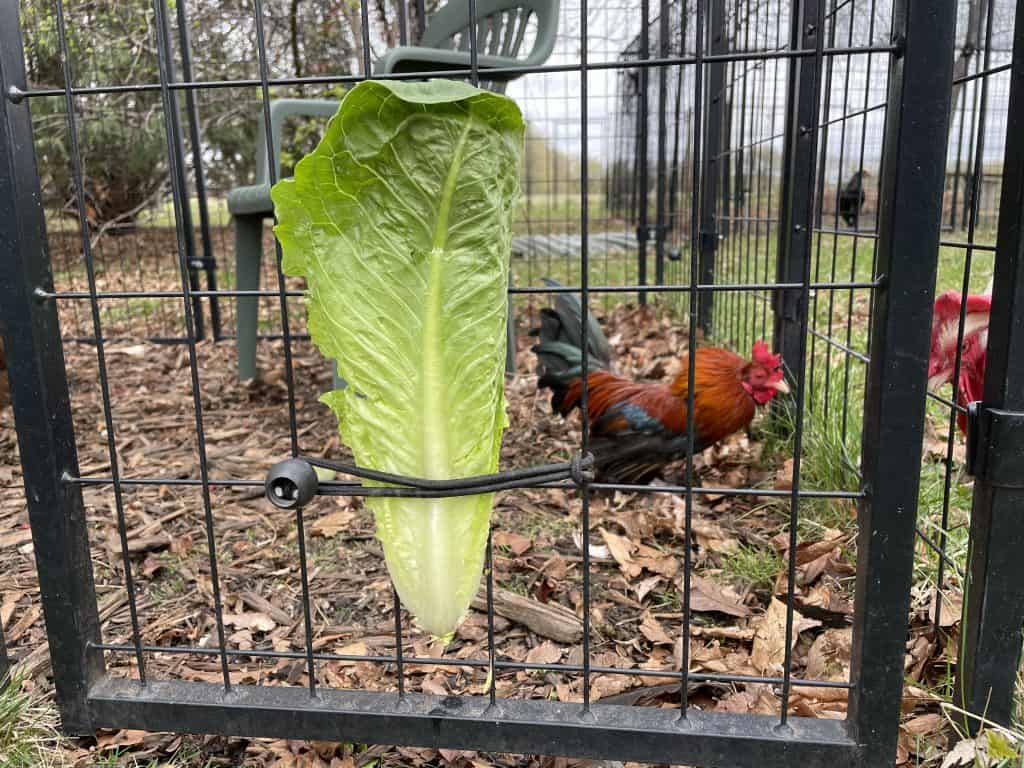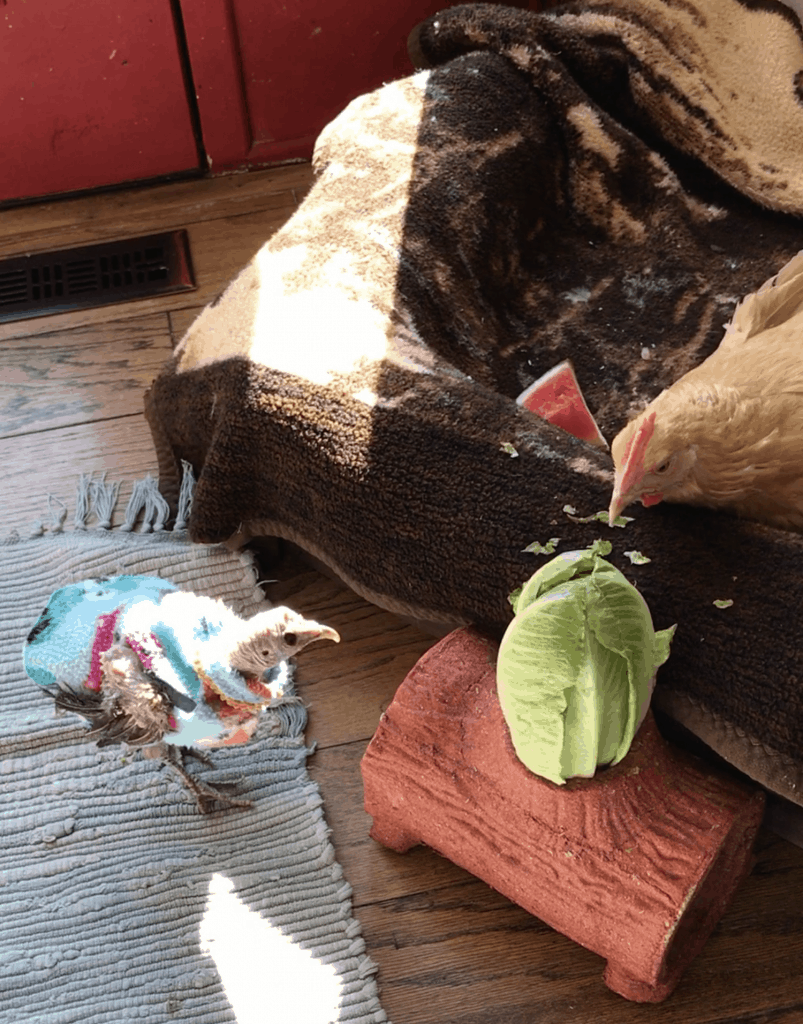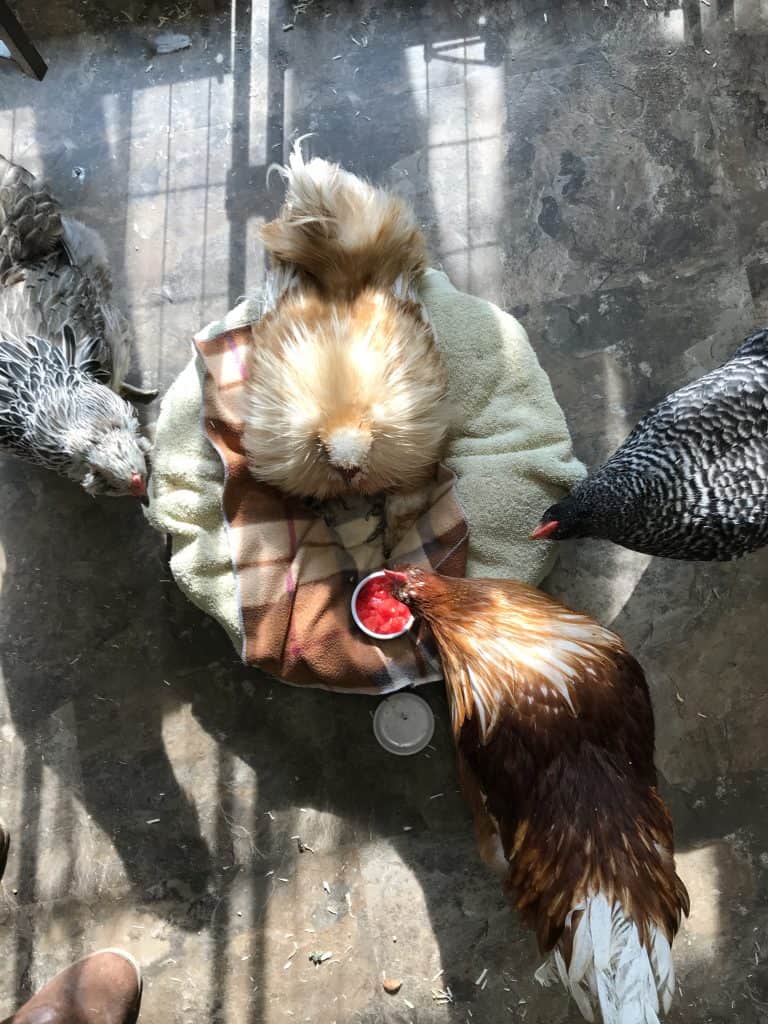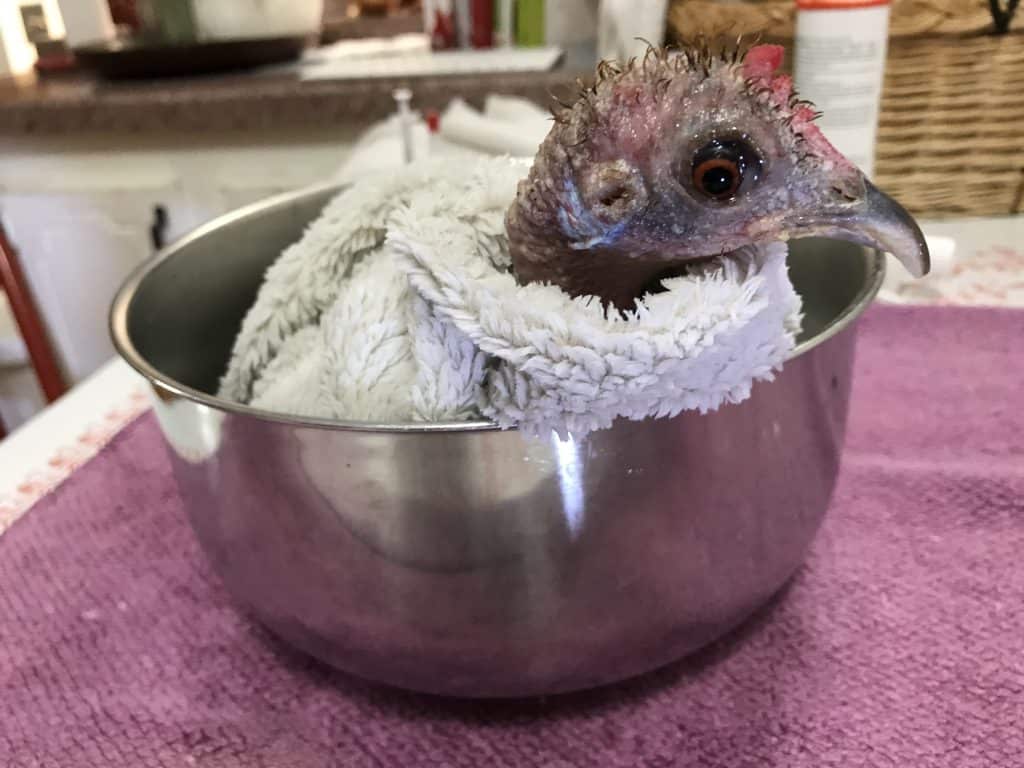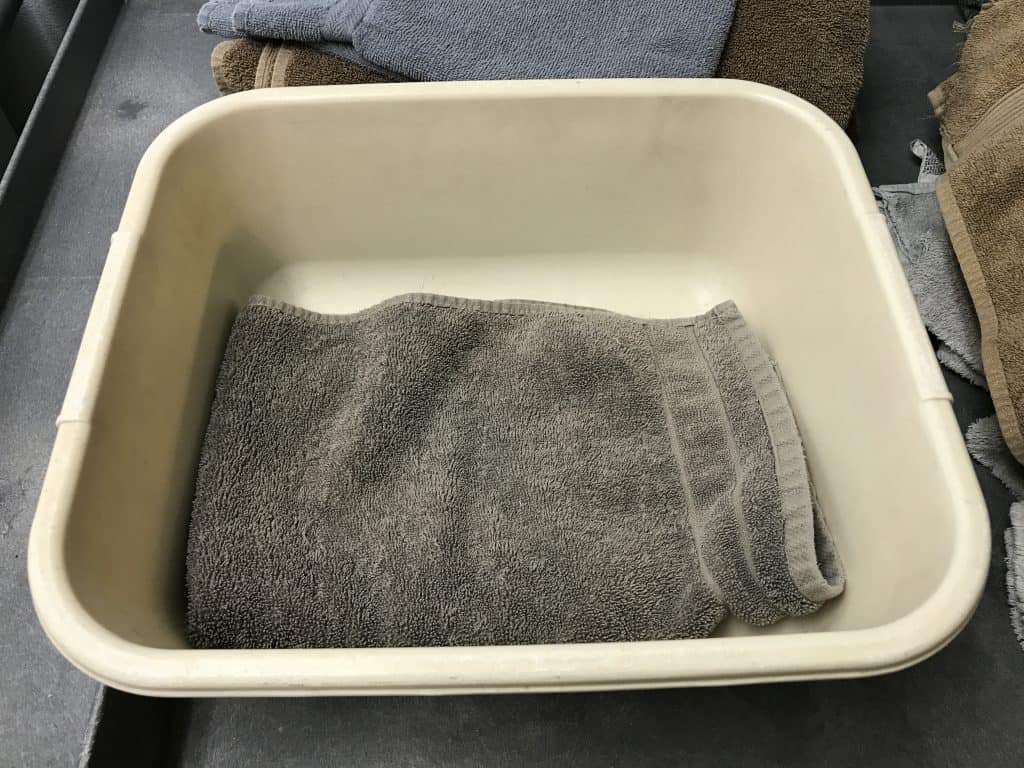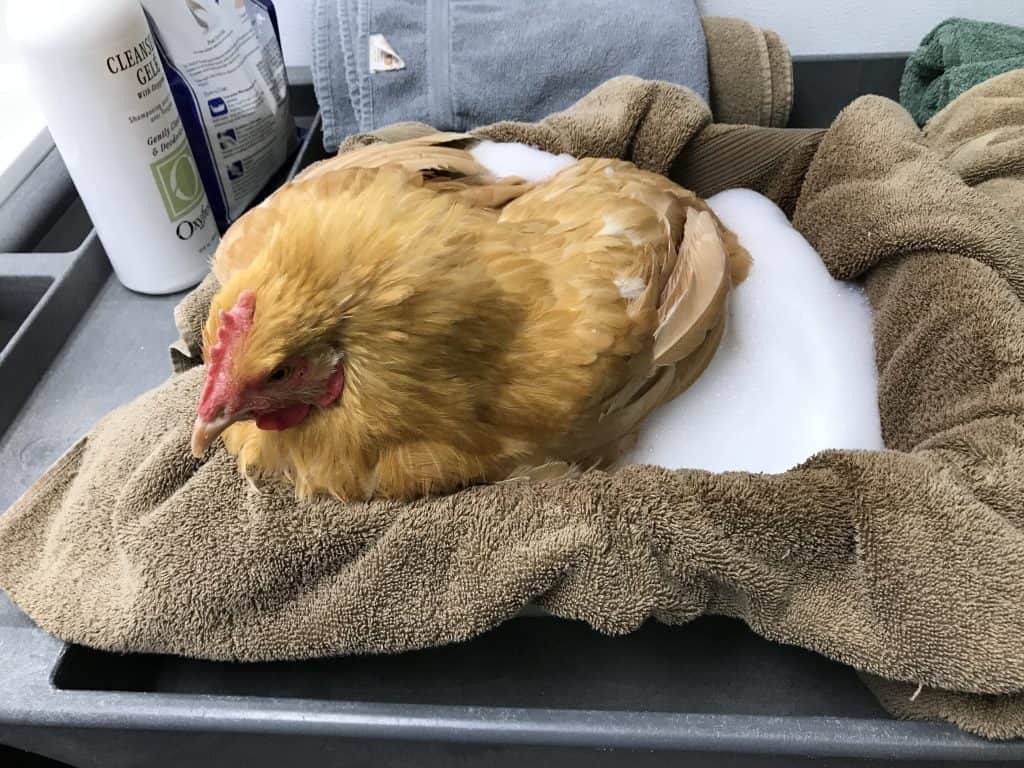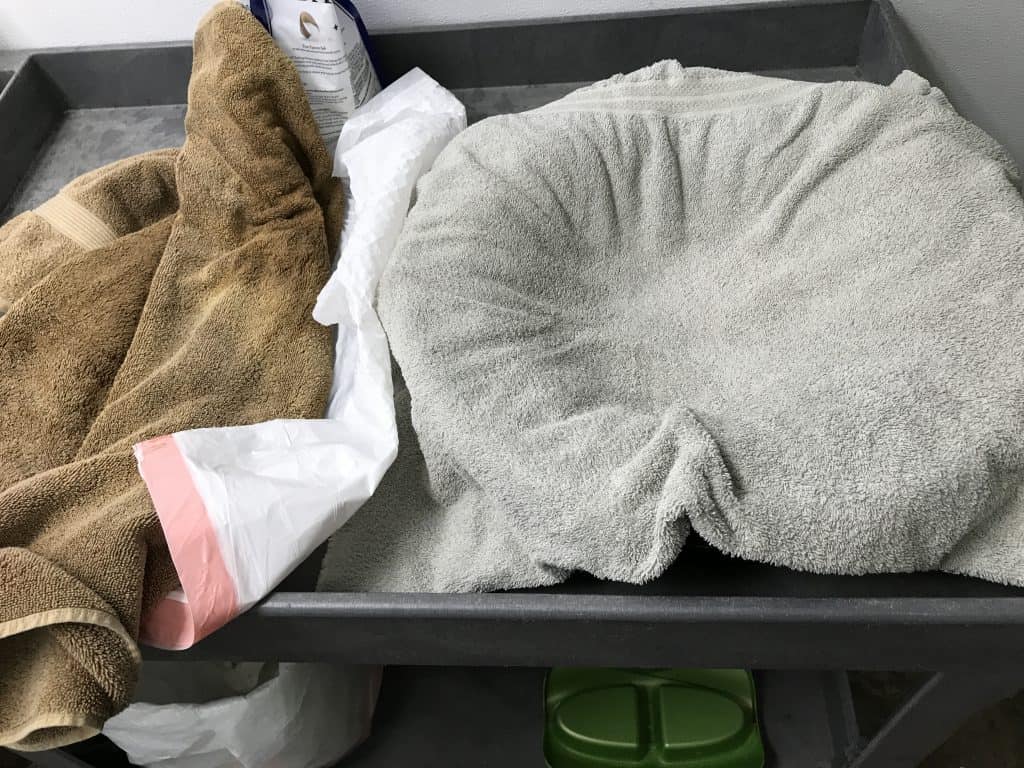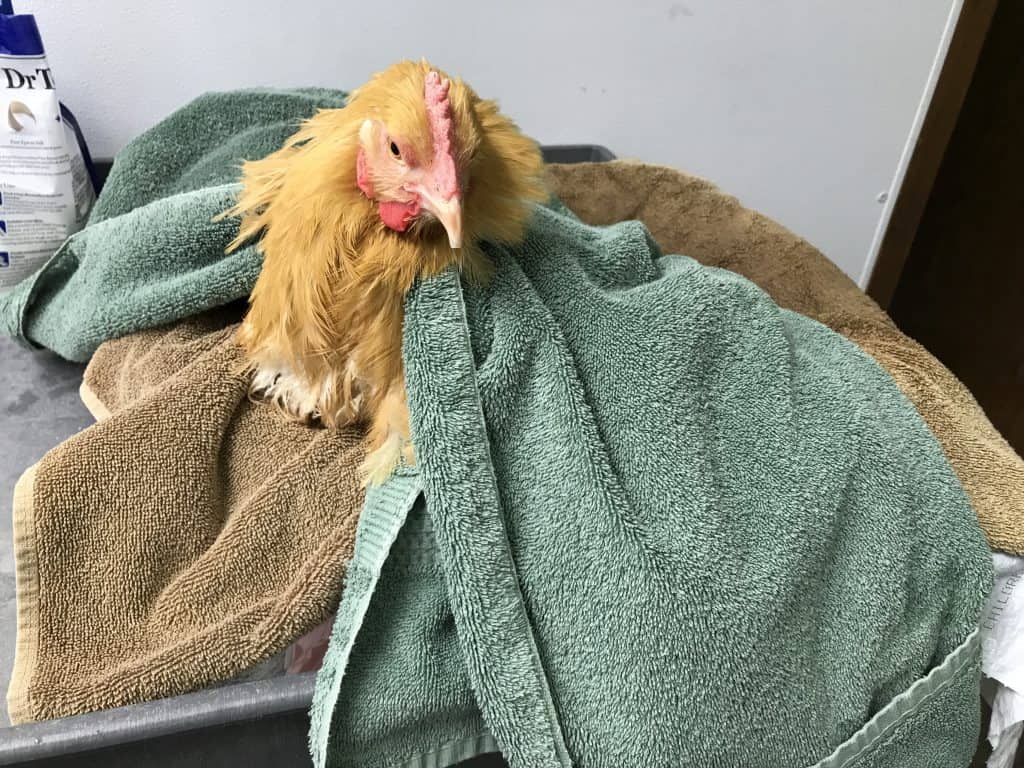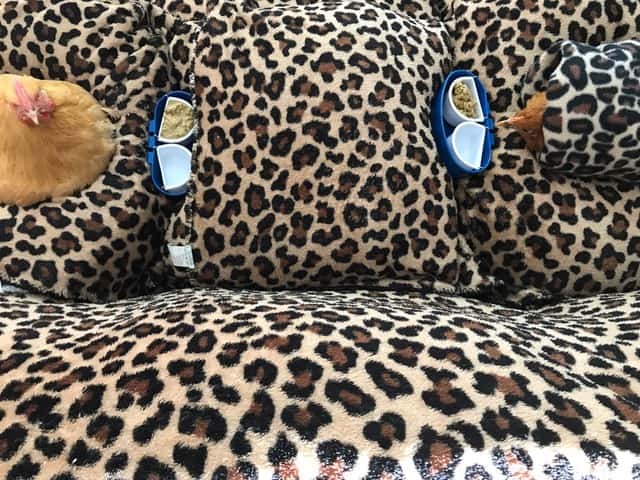
This Resource Is Part Of A Series!
If you haven’t already, be sure to start with Part One, which you can find here!
Feeding Non-Ambulatory Residents
Eating is one of the happiest parts of life for a chicken. The ability to self-feed is a vital aspect of comfort, sustenance, contentment, and independence for chicken residents with an illness, injury, or disability. However, keeping them clean and dry is equally important. Offering food and water to non-ambulatory residents can take some extra thought in order to make sure it is not only accessible but also unlikely to spill. Spilled food and water not only make a mess, but spilled water could also result in a non-ambulatory resident becoming soaked and potentially chilled or cause them to develop skin sores and bacterial infections. If the setup allows for hook-on dishes, these will help prevent spills and can be positioned at a height that is comfortable for the individual. Food and water dishes can also be placed inside a larger dish to catch spills and can then be tucked into a secure nook. If dishes are to be placed on the floor, heavy flat-bottom ceramic dishes with wide bases work well and are less likely to be tipped. Dishes can also be raised by placing them on a sturdy elevated surface, such as on a large bowl turned upside-down, or by nestling dishes inside taller vessels.
Serving a complete diet food pre-soaked with water is a simple way to ensure sufficient intake of both food and water and reduce the risk of spills. CRR almost exclusively offers a nutritionally balanced crumble to non-ambulatory residents that is pre-soaked with water (or aloe juice) and refrigerated. Each serving is mixed with more water at mealtime to create a loose oatmeal consistency. This mush provides additional fluids during times when positioning a secure water bowl is difficult. While mush is the primary diet of non-ambulatory residents, it’s so popular that it is served to all the residents regularly as a special treat. Mixing in dried fruit, frozen blueberries, or corn makes it extra special! Another appetite stimulant that excites a crowd is extruding hand-feeding mush from a feeding syringe. It’s shaped and moves like worms and that spells “good eating!” Everyone at CRR comes running when they see it, and it’s good for positive associations should they ever need it themselves.
CRR has found that chickens enjoy greens, fruits, and vegetables most if they are served in a way that resembles how they would be found in nature- to be plucked, tugged, and nibbled at as if they were still living plants. Bungee balls have a thousand uses as fasteners, as do kitchen clips or commercial treat holders, such as the clay log shown in the slideshow below. If strategically placed, it can be a communal forage feast which is always an appetite stimulant. While set up in their Serta beds, CRR residents also enjoy “foraging” food off their blankets once in a while.
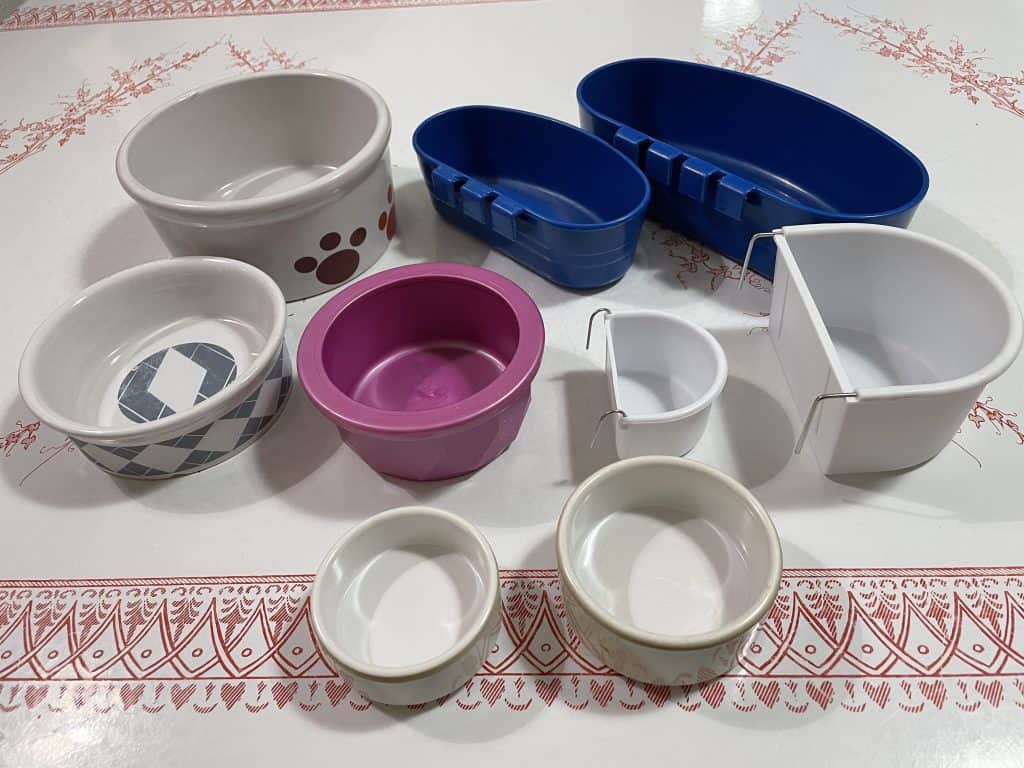
Heavy flat-bottom ceramic dishes with wide bases and hook-on dishes are tip resistant. Hook-on dishes help prevent spills, keep poop out of food and water, and can be positioned at a height that is comfortable for the individual. Food and water dishes can be placed inside a larger dish to catch spills and can then be tucked into a secure nook. Dishes can be combined for function. When placed in the cup, this dish is elevated and secure. The combination results in a secure dish held at the appropriate level. To ensure sufficient intake of food and water and to reduce spills, crumble is pre-soaked with water to make a delicious mush. Mixing in minced greens, pasta, dried fruit, frozen blueberries, or corn makes mush extra special. Extruding hand feeding mush from a feeding syringe is an appetite stimulant that draws a crowd which makes eating more exciting. Securing whole lettuce leaves with a bungee resembles how greens would be found in nature- to be plucked, tugged, and nibbled at as if they were still living plants. Lunaris watches Zelda pluck at the romaine held in a clay log. Perry always ate better when his friends helped.
Enrichment For Non-Ambulatory Residents
Enrichment is an important aspect of care for all residents, and we’ve already discussed various forms of physical and nutritional enrichment that can be included in the supportive care of non-ambulatory residents. Additionally, music or nature sounds may be soothing, but watch out for bird recordings- some may include predator warnings that will create a riot (something the folks at CRR learned the hard way!). Visual stimulation can come from mirrors, windows, or videos. Pecking and scratching behaviors can be nurtured with treat holders, treat balls filled with scratch grain, or sprouted grass seeds.
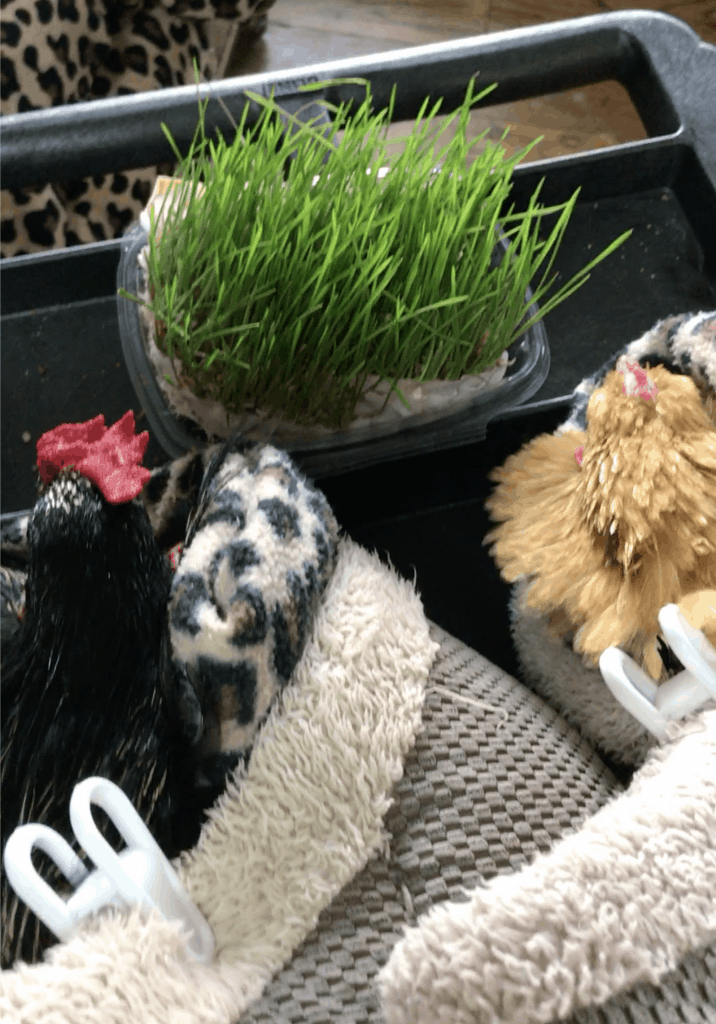
Get creative with indoor winter enrichment and stimulation. CRR has found that light therapy (“happy lights”) is one of the most significant comforts that can be offered. Birds are extremely affected by light. CRR has 16 portable lights throughout the house, and the residents will literally crowd around them to bask. Light therapy is extremely effective for birds recovering from illness or injury. When using happy lights, it is best to mimic the natural cycle of light and darkness for the time of year.





Clockwise from top left: Hazel is transfixed by her happy light; Lunaris had a skin condition related to psoriasis. She was oddly obsessed with her happy light. CRR learned later that phototherapy is seen to be an effective treatment for it; Zazu keeping vigil with Lunaris in her last days; Lunaris and Mohandas, Temples of Light; Brian and Juan soaking up some rays with Donlan who is under the weather.
Companionship
As highlighted in the Zelda and Monti slideshow (and illustrated in most of the photos in this resource), companionship is vital for non-ambulatory residents. As Mary Britton Clouse points out, “The common prejudice is that other chickens will bully one who is vulnerable, that they are perceived as a risk to the flock as predator bait or a disease vector. That is something to be vigilant for, but our more common observations are that some chickens, especially hens, are the best nurses in the world at heart. They will sit close to a vulnerable bird, preening them or encouraging them to eat, and challenge any bullies who try to start something. Once the flock knows and accepts that another resident is different, but they are accustomed to their presence in a basket, on a bed, or in a yurt, it becomes the new normal. Sometimes the hens will even flock around the individual for a group preen. The individual gains confidence that their complaint- a squawk, a growl, or a shriek- will bring someone to the rescue. (Hint: Keep a squirt bottle set to “stun” handy for the occasional lapse of judgment.) Close supervision is essential and brings a real gift of insight.”
Hands-On Care, Bathing, And Grooming
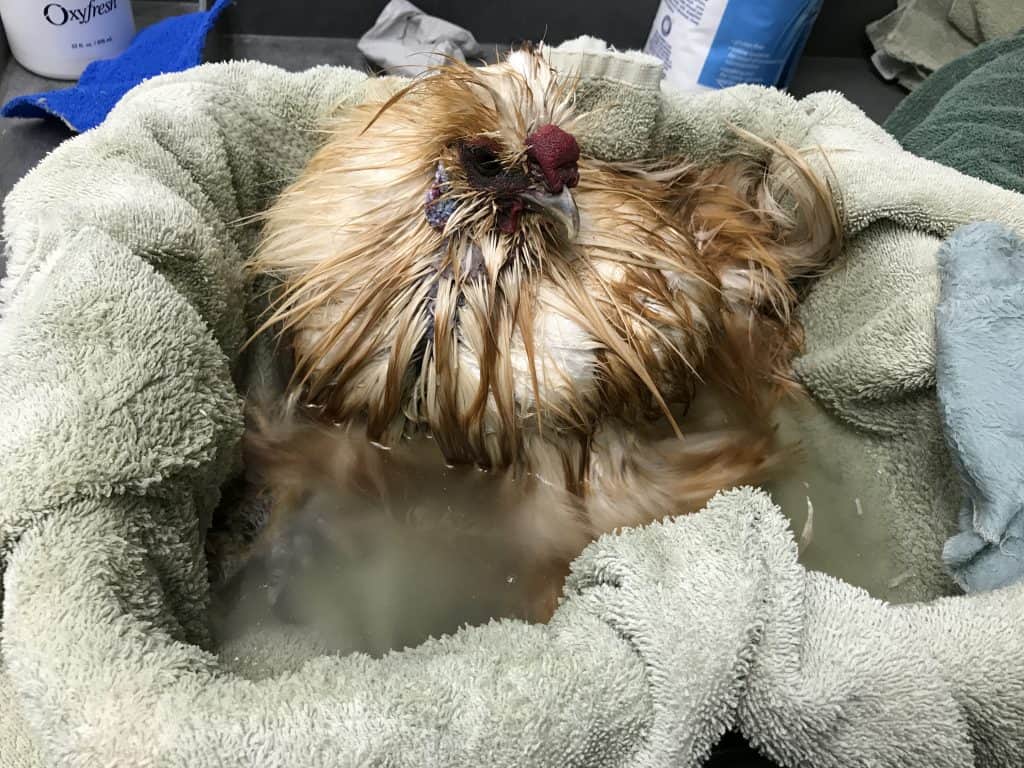
While most chickens do not require bathing, those who are non-ambulatory typically do (even if it is just a partial bath to clean their butt). Depending on the type of injury or disability, some individuals are able to pass feces free from their vent feathers and will move away from it if possible (Monti does!). These residents will require only occasional bathing. Others may not have that capability and will require daily monitoring and cleanups and perhaps several baths a week. When you are first providing care for a non-ambulatory resident, it’s best to check them daily and bathe them as needed. Over time, you will learn what is typical for each resident and will be able to create a bathing and monitoring schedule that suits their needs.
At CRR, routine bathing and grooming are bonding experiences that the resident and the caregiverSomeone who provides daily care, specifically for animal residents at an animal sanctuary, shelter, or rescue. can look forward to. The sensation of gentle touch is vital for physical and emotional health. It also provides a regular opportunity to trim nails and beaks, preen new feathers, and examine for evidence of problems like skin sores, feather breakage, or joint swelling.
Prior to bathing a resident, set up everything you will need for the bath so it is a quick, efficient, and calm experience. To safely bathe medium or large-sized residents, CRR sets up a dish tub lined with towels on the bottom and the sides. The towels create both cushion and offer traction. Baby shampoo or a non-toxic cleansing gel and Epsom salts are added to warm water, and the individual soaks in this water for about ten minutes. Some individuals, especially tiny bantams, might do better soaking in a bowl with saturated fleece. Soaking softens hardened feces and allows the salts to soothe the skin. Sometimes a fine-toothed [glossary_ignore]comb[/glossary_ignore] is necessary for clumped feathers. An additional tub is set up with thick towels, and the resident is set in this tub while the rinse is drawn. A large heavy towel placed over their back is usually sufficient to keep them safely in place while you change the water. To prepare the rinse, bath water is drained from the tub, the towels are replaced with fresh ones, and the tub is refilled with clean warm water and Epsom salts to rinse the soap away.
Lunaris’s skin care regimen required long soaks in epsom salts. Mary and Lunaris both loved her baths and their special time together. For larger residents- standard dish tub with thick hand towel in bottom. Then lined with thick double bath towel. Warm water, epsom salts, gentle cleansing gel, and Zelda. Feed pan padded with thick towels provides a comfy place to set a wet Zelda as rinse water is drawn. A large heavy towel placed over her back is sufficient to keep her safely in place while water is changed.
After bathing, residents should be dried with a hair dryer, and for this part of the process, a fresh, dry towel is placed in the spare tub, and the resident is placed inside. It can take quite some time to thoroughly dry the individual, but the length of time will vary based on the individual and also the hair dryer being used. Set the dryer so the temperature is warm enough to dry feathers efficiently without being so hot as to cause discomfort. The dryer should be kept moving during the drying process and never focused on one spot too long. Positioning a towel over the individual’s back makes a tent that helps concentrate the warm air and fluff the feathers faster. As with any electric tool that makes noise, let it run nearby to let the resident get accustomed to the sound before actually applying it to the task at hand. Warm air in the feathers is extremely pleasant (watch chickens on a breezy summer day), and once they have had a positive experience with it, CRR residents pay no mind at all. They become really relaxed and comfortable and come to enjoy this special time with their caregiver. Zelda is restless when she needs a bath and is a contented new woman after she has had one.
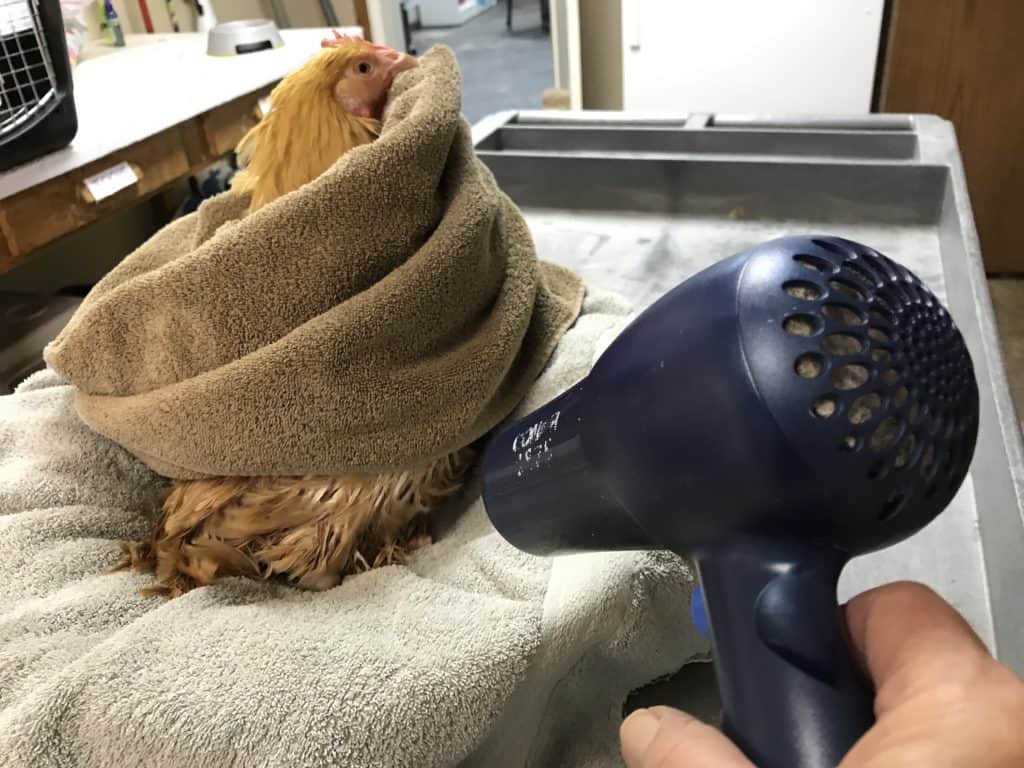
To see Zelda getting a bath and styling, check out this recording put out by CRR and Animal Rights Coalition– the video starts out sideways, but corrects a few minutes in. You’ll also get a peek at other CRR residents and their outdoor accommodations at the end of the video!
Thanks to CRR for sharing their vast knowledge about providing supportive care for non-ambulatory residents. Sharing their home with over one thousand chickens over the last twenty years and caring for many non-ambulatory residents certainly brings insights that may not be apparent when there is more separation between humans and chickens. We hope these insights help caregivers feel more capable of providing supportive care to non-ambulatory residents. We’ll leave you with these words from Mary Britton Clouse, “What an honor it is to know these creatures so intimately. There is no deeper bond you will ever have with an animal than through providing supportive care. As demanding as it can be, the rewards for both of you are immeasurable.”
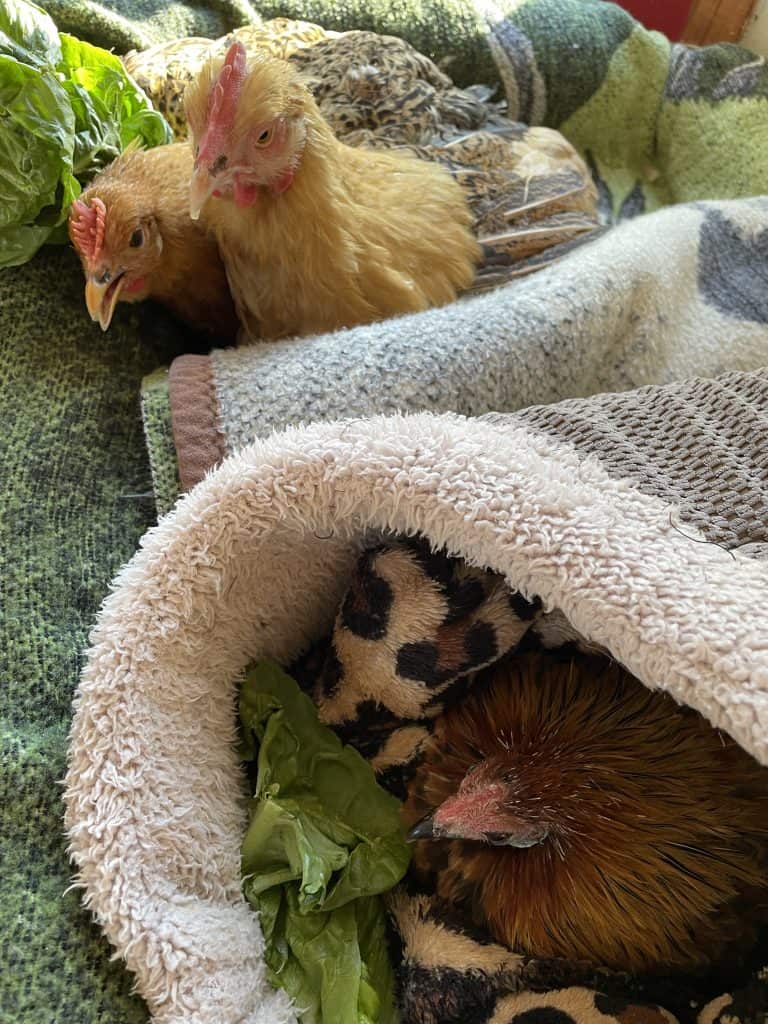
Dedication To All Nurses
Zazu passed away as this resource was being completed. Her left foot had been clubbed by a severed tendon from a breeding band not removed as she grew. For 12 years, despite or because of her disability, she was a dedicated caregiver to others. This is the last picture of her as she passed the torch of nursing on to Zelda and Monti.




